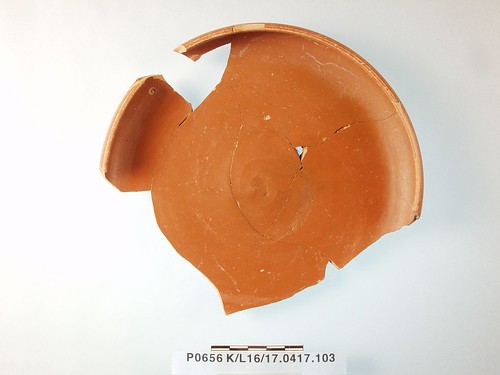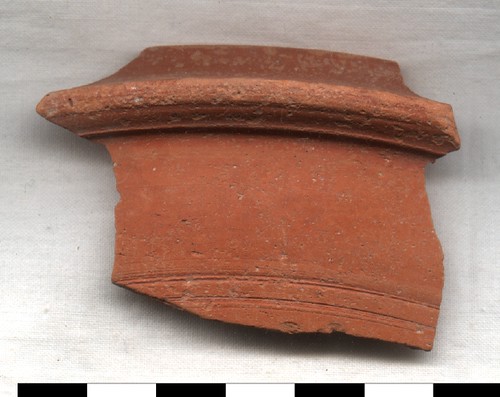
This is the interior of an ESC Hayes form 4 from a late third century AD pit.

Then a sequence of rim sherds. The top three are again ESC Hayes form 4, the lower PRS Hayes form 1. Surface treatment moves from a quite high-gloss finish to a dull matte slip. The ESC is from a 4th century deposit with considerable residual material. The PRS is from a late 4th/early 5th century group. Note the color variation that begins to appear on ESC. This has the feeling of error or at least sloppiness. On PRS, a stacking line becomes one of the signatures of the ware. While such lines do not need to be called "decoration", they shouldn't be thought of as errors.

Now the exterior of a fifth century PRS Hayes form 3 with thin slip.
That the transition from ESC H4 to PRS H1 was smooth has long been known. Nonetheless, these sherds come from distinct production centers. Or rather, the PRS likely comes from workshops in/near ancient Phocaea, whereas production of ESC may have been more regionally distributed between Pitane/Çandarli and Pergamon.
We don't have great early 4th century deposits at Ilion but our evidence indicates that Hayes was right to raise the possibility of overlapping production of these two forms. Nonetheless, ceramic catalogs often enforce a distinct separation between ESC and PRS, with the former falling into discussion of Roman period ceramics and being separated from PRS by the presentation of other wares. Ancient consumers may not have perceived much of a difference as their sources of supply slowly changed over the decades of the fourth century.
